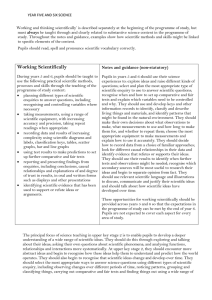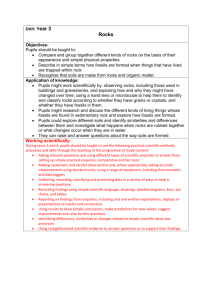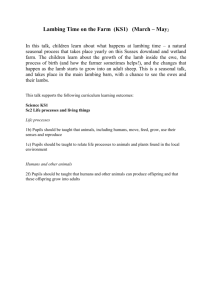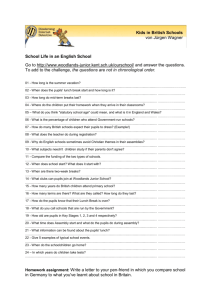Unit- Year 6 Evolution and Inheritance
advertisement
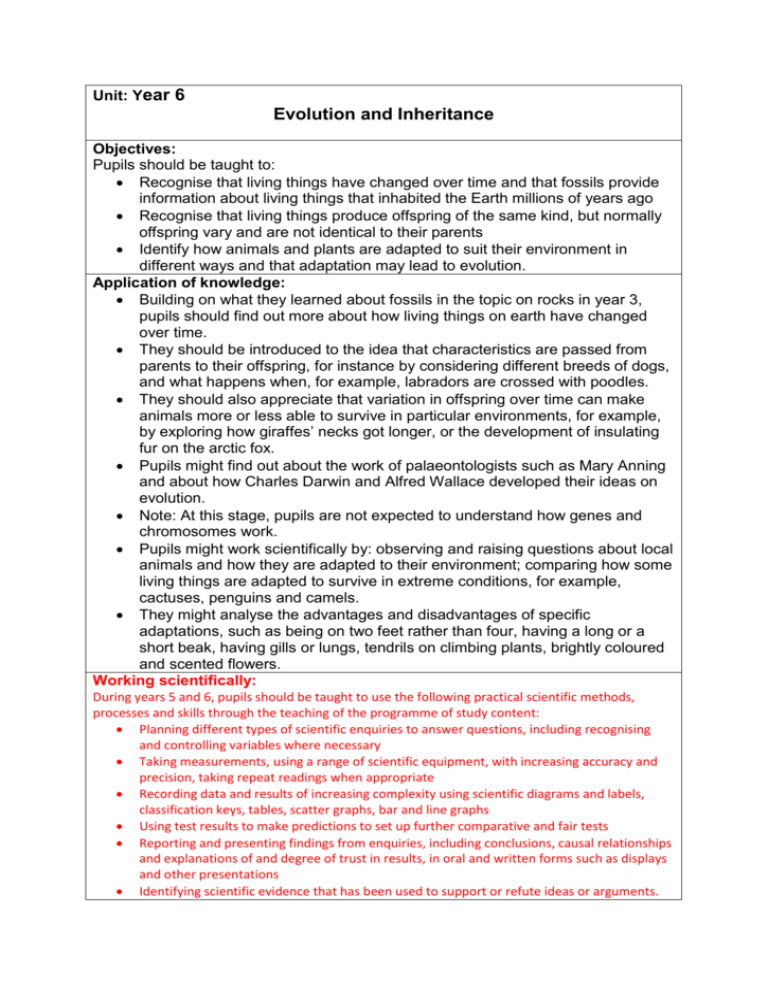
Unit: Year 6 Evolution and Inheritance Objectives: Pupils should be taught to: Recognise that living things have changed over time and that fossils provide information about living things that inhabited the Earth millions of years ago Recognise that living things produce offspring of the same kind, but normally offspring vary and are not identical to their parents Identify how animals and plants are adapted to suit their environment in different ways and that adaptation may lead to evolution. Application of knowledge: Building on what they learned about fossils in the topic on rocks in year 3, pupils should find out more about how living things on earth have changed over time. They should be introduced to the idea that characteristics are passed from parents to their offspring, for instance by considering different breeds of dogs, and what happens when, for example, labradors are crossed with poodles. They should also appreciate that variation in offspring over time can make animals more or less able to survive in particular environments, for example, by exploring how giraffes’ necks got longer, or the development of insulating fur on the arctic fox. Pupils might find out about the work of palaeontologists such as Mary Anning and about how Charles Darwin and Alfred Wallace developed their ideas on evolution. Note: At this stage, pupils are not expected to understand how genes and chromosomes work. Pupils might work scientifically by: observing and raising questions about local animals and how they are adapted to their environment; comparing how some living things are adapted to survive in extreme conditions, for example, cactuses, penguins and camels. They might analyse the advantages and disadvantages of specific adaptations, such as being on two feet rather than four, having a long or a short beak, having gills or lungs, tendrils on climbing plants, brightly coloured and scented flowers. Working scientifically: During years 5 and 6, pupils should be taught to use the following practical scientific methods, processes and skills through the teaching of the programme of study content: Planning different types of scientific enquiries to answer questions, including recognising and controlling variables where necessary Taking measurements, using a range of scientific equipment, with increasing accuracy and precision, taking repeat readings when appropriate Recording data and results of increasing complexity using scientific diagrams and labels, classification keys, tables, scatter graphs, bar and line graphs Using test results to make predictions to set up further comparative and fair tests Reporting and presenting findings from enquiries, including conclusions, causal relationships and explanations of and degree of trust in results, in oral and written forms such as displays and other presentations Identifying scientific evidence that has been used to support or refute ideas or arguments.

![afl_mat[1]](http://s2.studylib.net/store/data/005387843_1-8371eaaba182de7da429cb4369cd28fc-300x300.png)

